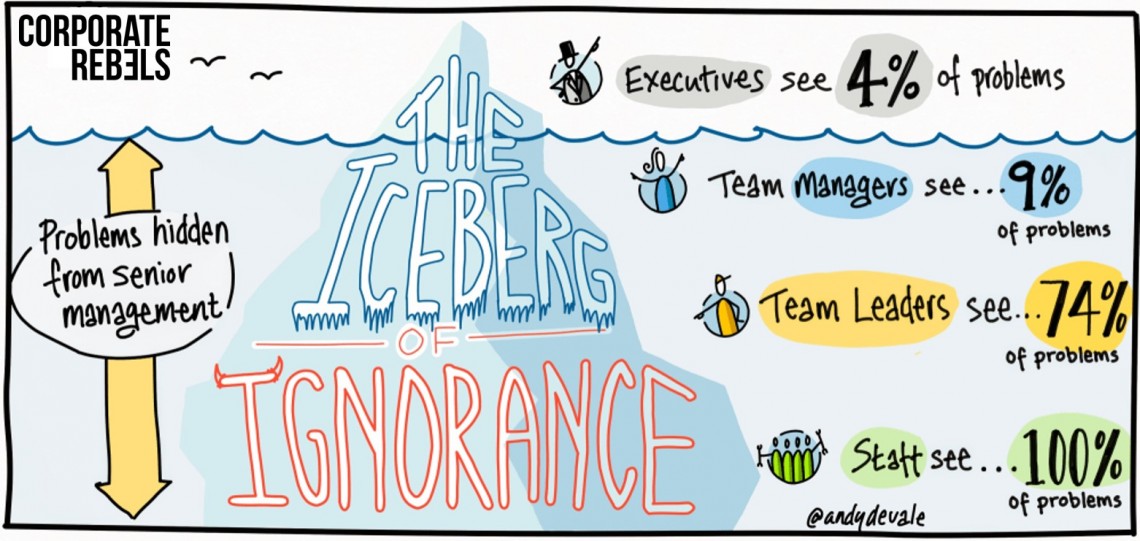Lean in IT: Transforming leadership to maximize results!
How Lean methodology is reshaping the IT landscape
07 mins read

CIOs, down to Service Desk analysts, understand the importance of process improvement, cost reduction, and customer satisfaction demanded by the IT industry. However, they often need to pay more attention to the issues that prevent employees from delivering value effectively and safely.
The Lean methodology offers a systematic approach to address these issues by identifying and eliminating waste. Over the last decade, it has become popular in the IT industry for its ability to reduce costs, improve quality, and increase efficiency. Implementing Lean in IT requires a change in mindset, starting with senior leadership.
(For more information on Lean in IT, refer to Daniel Breston's blog post "Blend Lean IT with ITSM to create customer and employee value.")
Leadership must shift from command-control management to a servant-generative learning style to adopt Lean principles:
- Embracing change and being open to new ideas
- Providing necessary resources and support for implementing Lean principles
- Communicating the importance of Lean and how Lean will enable personal and company goals
- Recognizing that you don't have all the answers
- Coaching in how to identify and remove obstacles that hinder progress
- Focus on the well-being of your staff while ensuring customer value is delivered
Leaders can introduce Lean by keeping these questions in mind:
- What do our employees value?
- Who are our customers, and what do they value?
- Why is our work valuable to them?
- How do we create that value?
- What is my leadership role, and how do I model this behavior?
- How do I help employees and suppliers appreciate their part in value delivery?
Introducing lean will be challenging, but with effort, it can improve performance, increase employee and customer satisfaction, create desired services, and reduce costs. Lean is essential for DevOps, ITSM, and Agile practices, and leaders can use practices already instrumental in their company to embrace change.
Change #1: Observe what you're missing (leaders, your role is to take out the trash)
Your business creates value based on employees' understanding and agreeing on organizational goals. As a leader (CIO, Scrum Coach, Service Desk Manager), you coach them to improve workflow, processes, collaboration, and tool usage, such as AI. Waste is what you do not see that hinders your progress and agility. Lean uses the acronym DOWNTIME to highlight the eight major types of:
- Defects: Overcome the culture of shipping first and fixing later. Test and ensure quality from the beginning to release. Work with staff and customers to fix issues early and often.
- Overproduction: Avoid adding unnecessary features that no one asked for by only creating what employees and customers want and when they need it. (Just-in-Time)
- Waiting: How much time do people spend waiting for approvals, answers, feedback, or attending meetings? Leaders can keep the flow going by minimizing the wait.
- Non-utilized talent: Do you match skills to the work? Are there individuals who are overqualified and bored in their current teams? Leaders should ensure that employees' talents contribute and provide value and that training and learning are continuous activities at all levels.
- Transportation: Are you unnecessarily sending data, information, or code? Consider reports that are sent to many but read by few. IT leaders must ensure that data is effectively and efficiently used to increase value delivery while shortening the time.
- Inventory: Do you have technology or cultural debt? Are there duplicate products or services? Leaders are responsible for ensuring that debt reduction is a daily priority.
- Motion: Should employees work in the office or follow a hybrid model? Can cross-functional teams effectively collaborate? Leaders utilize technology to create the best work environment for all employees. Further, technology can reduce the bounce of incident tickets from team to team or customer.
- Excess processing or compliance: Examine your value stream for unnecessary approvals, forms, tests, extra work, handoffs, or task switching. Empower teams to improve and eliminate wasteful activities continuously. Ensure your management requirements make sense and are still required.
Change #2: Ask why you didn't know (Look at the iceberg)
As a CIO, I was enthusiastic to introduce lean practices. We spent several months focusing on waste and learning lean practices. Despite these efforts, obstacles occurred, and satisfaction with our services was lower than expected. One day, an employee courageously told me I was the main obstacle by being stuck in my old ways. I asked for lean but had not altered my management behavior to empower staff to perform lean. I needed to become a servant leader. I don't mean to advocate for an utterly unstructured environment, but it's crucial to understand and practice true empowerment as a lean leader by:
- Nurturing a climate of continuous feedback and learning
- Transform the attitudes and behaviors of everyone, including suppliers, to align with a lean culture that meets the needs of employees and customers
- Recognize and appreciate the effort, not just success
- Stop blaming individuals and instead focus on improving the system they work within
Change 3: Prioritize Action over Reports (Take a walk)
CIOs and managers often believe that they clearly understand what's happening in their organization based on reports and meetings. However, this assumption needs to be revised. In the past, My lean coach challenged me to shift my focus by spending 70% of my time addressing issues that hindered value creation. According to her, unless I did this, I was not contributing effectively to the organization.
She was right. I once knew a CIO who had a unique approach to improving operations. Regardless of their role in the company, he would ask every employee he encountered a simple question: "Will you be able to assist an employee, serve a customer, or perform your job in the best and safest manner tomorrow?" Whenever someone responded negatively or offered a suggestion for improvement, he would record it and pass it to direct reports for resolution, but not without first challenging them: "Why weren't you aware of this?"
Gemba (Japanese for "actual place") refers to where work is performed, such as incident design or repair. The Gemba walk is a Lean methodology used to observe work and uncover areas of waste. No matter your level, Gemba daily, find the waste (take out the trash).
Change 4: Visualize work and obstacles (Take off your blinders)
Value Stream Mapping is a technique that maps the entire workflow, identifying areas of waste. Kanban is a visual practice used to highlight work-in-progress and identify blockages. Obeya is a room with visual charts and VSM that assist teams in value creation and problem-solving. These techniques make waste or issues much more apparent. Importantly, when maps or work boards are visible, the fear of indicating a problem disappears, and skilled individuals collaborate openly to resolve issues. I've known teams to use Obeya to illustrate to stakeholders how progress is being made or hindered. In best cases, VSM, Kanban, and Obeya increased the psychological safety of staff by highlighting stress, anxiety, or burnout in teams that were overstretched with activities.
Some stories illustrate the changes
In the DevOps book, The Phoenix Project, the VP of Operations and the Head of Security approach each business manager with two questions:
- What actions can be taken in the next three months to support your staff to deliver customer value?
- What obstacles are in the way?
They then reviewed all ongoing IT projects and halted any that didn't contribute to business objectives. They created value stream maps and problem charts, accessible to everyone to provide insight into IT activities and expected benefits. They repeated this exercise until stakeholders began to trust IT and actively began working with them to do things better, safer, faster and at less cost.
A true story from a bank: The new CTO was informed that his IT equipment would take two weeks to arrive. His first two weeks would be unproductive, which was the case for all new employees or employee transfers. The CTO calculated the impact: 200 new employees or monthly transfers times two weeks of lost labor. The number was significant, so the CEO instructed the heads of IT, HR, Facilities, etc., to find a solution. The CEO demanded that employees start working the same day they begin their employment, whether new hires or transfers. The leaders developed a new employee hiring and induction system by analyzing the current processes and involving employees at all levels. It took only a month to create a sustainable solution. The process was so enjoyable that it prompted the team to seek out other areas for improvement. This empowered mindset facilitated their transition from project to service management.
A CIO was struggling to understand why it took eleven weeks to create a new cloud-based environment, regardless of whether it was for testing or production. The new lean team told him they could do it in less than 20 minutes. He empowered them to prove it and said he would eat his hat if they did. Three weeks later, they demonstrated the Higher Atmosphere Technique (Hat) for environment creation and management. The CIO threw a party and took a hat with him, which he duly cut and ate with his cake.
Conclusion
Implementing Lean in IT can be challenging, but the benefits of Improved satisfaction, incredible employee pride, reduced time from request to release, less bureaucracy, enhanced security and compliance, cost savings, and transformational leadership can be achieved. As Sheigo Shingo of Toyota stated, improvement goals are to make things easier, better, faster, and cheaper. Leaders must lead by example and undergo personal transformation to embrace Lean fully.

